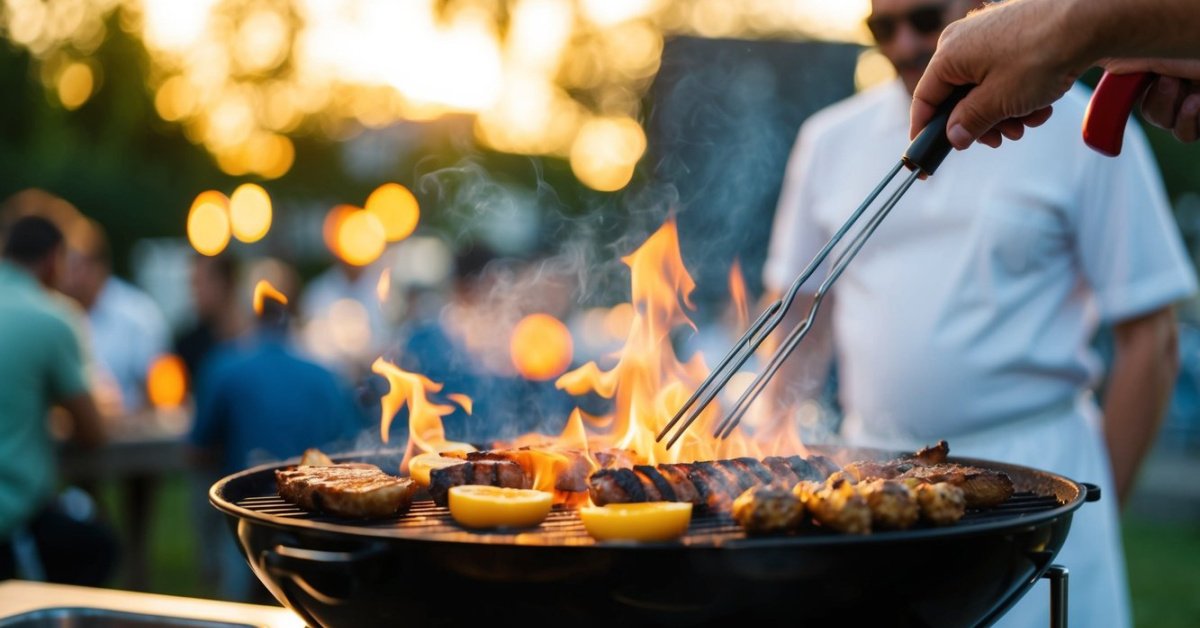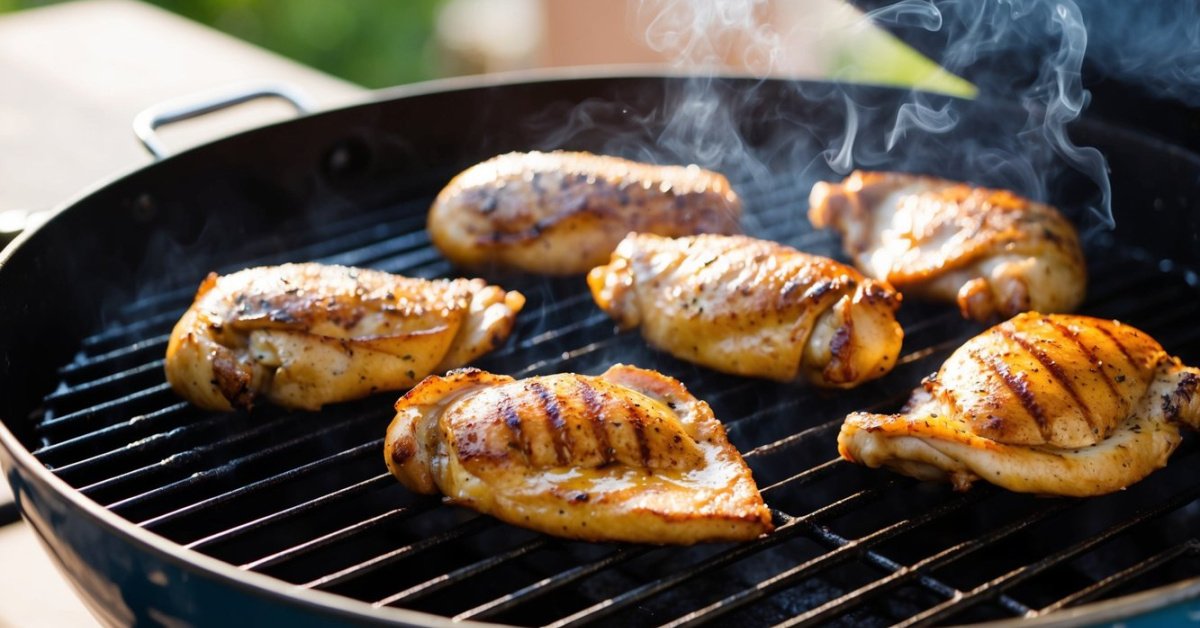Pulled Pork 101: Understanding Internal Temperature for Perfect Flavor and Texture
There’s nothing quite like the smell of perfectly seasoned pulled pork cooking on the grill, but getting it just right can be a challenge. One of the key factors in achieving that melt-in-your-mouth texture and delicious flavor is the internal temperature of the meat. For those new to grilling and barbecuing, understanding the importance of internal temperature can be daunting, but fear not!

In this article, we’ll dive into the ins and outs of measuring internal temperature when cooking pulled pork. We’ll cover everything from choosing the right thermometer to checking the temperature at the right spots to achieving the ideal internal temperature for optimal texture and flavor. Of course, safety is always a top priority when it comes to cooking pork, so we’ll also discuss important guidelines and considerations. So grab your apron, fire up the grill, and read on to become a pulled pork master!
Understanding the importance of internal temperature when cooking pulled pork.
When it comes to cooking pulled pork, understanding the importance of internal temperature is crucial for achieving perfect results. As a grilling enthusiast, you want your meat to be juicy and flavorful without being undercooked or overdone.
The ideal internal temperature for pulled pork is around 195°F-205°F, which allows the collagen in the meat to break down and become tender enough to pull apart with ease. But how do you know when your meat has reached this magical number?
Investing in a good quality digital thermometer can make all the difference. Inserting it into different parts of your pork will give you an accurate reading so that you can adjust cooking time accordingly if necessary.
It’s also important not to rush things – slow and steady wins the race when it comes to smoking or roasting meats like pulled pork. Maintaining a consistent temperature throughout your cook time will ensure that every inch of your meat reaches its target temp.
So next time you fire up that smoker or grill, remember: internal temperature is key! With some patience, practice and attention paid towards getting those numbers just right – there’s no reason why anyone shouldn’t be able produce mouth-watering barbecue goodness from their own backyard!
Choosing the right thermometer for measuring internal temperatures.
Choosing the right thermometer for measuring the internal temperature of your pulled pork is crucial to achieving that perfect, mouth-watering texture and flavor. As a grilling enthusiast myself, I know firsthand how daunting it can be for beginners to navigate the array of thermometers available on the market.
Firstly, you need to decide whether you want a digital or analog thermometer. While analog thermometers are inexpensive and easy to use, they may not always provide accurate readings compared to their digital counterparts. Digital thermometers come in various forms – some with simple probes while others have more advanced features such as Bluetooth connectivity and temperature alarms.
Next up is deciding on which type of probe suits your needs best. There are two main types: instant-read probes and leave-in probes. Instant-read probes give quick results but require regular manual checking while cooking whereas leave-in probes can remain inside meat throughout cooking, providing continuous updates without opening up ovens or smokers.
Finally, pay careful attention to accuracy levels when selecting a thermometer as even slight variations could mean overcooked or undercooked meat – not ideal when preparing pulled pork! Look out for models with +/- 1 degree Fahrenheit accuracy ratings at least.
In summary; choosing the right thermometer can make all difference between an average meal versus one that leaves everyone wanting seconds! By considering factors such as type (analog/digital), probe style (instant-read/leave-in) & accuracy level (+/- 1°F), grill enthusiasts newbies will be well equipped in making informed decisions about how best measure their meats’ internal temperatures come cookout time!
How do I properly measure the internal temperature of pulled pork?
When it comes to grilling and barbecuing, nothing beats the satisfaction of cooking a perfectly juicy pulled pork. However, achieving that perfect texture and flavor requires more than just tossing the meat on the grill and hoping for the best. One crucial step in ensuring your pulled pork is cooked to perfection is measuring its internal temperature.
Firstly, make sure you have a reliable meat thermometer that can accurately measure temperatures between 100-200 degrees Fahrenheit. Once you have your thermometer ready, insert it into several different points of the thickest part of the pork shoulder or butt until you reach its centermost point.
When measuring internal temperature for pulled pork, aim for an optimal range of 195-205 degrees Fahrenheit which ensures maximum tenderness without being overly dry or chewy. The general rule is to cook at low heat (225°F) over many hours (12+), until an internal temperature reaches 200°F – but this will vary with each piece as well as how done each person likes it.
It’s important not only to measure at regular intervals but also consistently throughout all stages of cooking – from prepping through smoking – so you can adjust accordingly depending on your desired outcome and taste preferences.
By taking these steps in properly measuring pulled pork’s internal temperature while grilling or smoking barbecue enthusiasts are guaranteed delicious results every time!
The ideal internal temperature for pulled pork and its impact on texture and flavor.
When it comes to pulled pork, achieving the ideal internal temperature is crucial to ensuring a perfect texture and flavor. As a grilling enthusiast, you need to understand the science behind this process in order to achieve mouth-watering results.
The ideal internal temperature for pulled pork is around 195°F (90°C). This may seem high, but it’s necessary in order to break down the connective tissues and collagen within the meat. When these proteins break down, they create that signature melt-in-your-mouth texture that we all love.

However, cooking at too high of a temperature can result in dry and tough meat. That’s why it’s important not only to monitor your grill or smoker closely but also use other techniques like wrapping or spritzing with liquid during cooking.
By understanding the importance of reaching that perfect internal temperature for pulled pork and utilizing proper grilling techniques, anyone can become an expert BBQ pitmaster. So next time you fire up your grill or smoker for some delicious pulled pork, remember: patience is key!
Safety guidelines and considerations for cooking pork to the correct internal temperature are important.
When it comes to cooking pulled pork, achieving the correct internal temperature is crucial for both flavor and safety. As a grilling enthusiast, it’s important to know the proper guidelines and considerations for cooking pork to ensure you serve up a delicious meal that’s safe for everyone at your barbecue or gathering.
Firstly, let’s talk about why internal temperature matters. Pork can carry harmful bacteria like salmonella and E.coli, which can cause food poisoning if not cooked properly. The recommended internal temperature for pork is 145°F (63°C) with a three-minute rest time before serving. This ensures that any harmful bacteria are killed off while also maintaining juicy tenderness.
To achieve this ideal temperature when cooking pulled pork on your grill or smoker, there are several factors to consider:
1) Preheat Your Grill: Before starting the actual cooking process make sure your grill has reached an optimal heat level.
2) Use A Meat Thermometer: To accurately measure the internal temp of meat use an accurate meat thermometer
3) Keep The Lid Closed: Opening and closing lid frequently may lead into loss of desired temp which affects good results
4) Cook Slow And Low : Pulled Pork needs low heat over longer periods of time so as cook evenly without burning
By following these guidelines along with other necessary precautions you can ensure that your pulled pork is not only delicious but also safe to eat! So next time you’re firing up the grill or smoker remember these tips because as they say in grilling “you don’t want anyone getting sick from eating under-cooked meat”.

Conclusion
Pulling pork to its ideal internal temperature is an art form. Luckily, with the right tools and knowledge you can get it just right every time. Whether you’re a beginner or a seasoned expert, understanding the importance of proper internal temperature when cooking pulled pork will take your grilling game to the next level. So what are you waiting for? Put on that Apron and Get Grillin’!














